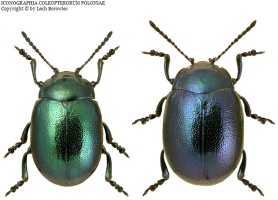
Русские, остановите эту войну! Спасите Свободную Украину!
Russians, stop this war! Save Free Ukraine!
Biodiversity Map
Taxa

Sphaeromela — subordinate taxa:
Taxon count: 1
-
Arthropodaphylum
Click to switch
to select orders
and filters > -
Hexapodasubphylum
Click to switch
to select orders
and filters > -
Insectaclass
Click to switch
to select orders
and filters > -
Coleopteraorder
Click to set
as the main taxon
and as a base
← of the left panel > -
Polyphagasuborder
Click to set
as the main taxon
and as a base
← of the left panel > -
Cucujiformiaseries
Click to set
as the main taxon
and as a base
← of the left panel > -
Chrysomeloideasuperfamily
Click to set
as the main taxon
and as a base
← of the left panel > -
Chrysomelidaefamily
Click to set
as the main taxon
and as a base
← of the left panel > -
Chrysomelinaesubfamily
Click to set
as the main taxon
and as a base
← of the left panel > -
Doryphorinitribe
Click to set
as the main taxon
and as a base
← of the left panel > -
Chrysolininasubtribe
Click to set
as the main taxon
and as a base
← of the left panel > -
Chrysolinagenus
Click to set
as the main taxon
and as a base
← of the left panel > -
Sphaeromelasubgenus
Click to set
as the main taxon
and as a base
← of the left panel >
PL
YES
name status: valid name
BioMap ID: 1024698
taxon code: 4394
taxonomy checked: YES
Data on distribution in Poland

Statistics
- Records: 214
- Publications: 64
- Collections: 10
- Publication authors: 52
- Illustrations (iconography): 2
- Photos (specimen/observation): 1
Taxon description
Gatunek szeroko rozprzestrzeniony w zachodniej części Palearktyki, występujący w prawie całej Europie (z wyjątkiem północnej Fennoskandii), w Algierii, Azji Mniejszej oraz na Syberii po dorzecze Irtyszu. Łowiony od wiosny do jesieni. Występuje na pobrzeżach lasów, w widnych zaroślach, na suchych łąkach, zboczach, porębach i przydrożach. Jako rośliny żywicielskie podawano różne gatunki dziurawców — Hypericum L. Zarówno postacie dojrzałe jak i larwy żerują na liściach tych roślin. Larwy żyworodne; po paru minutach od chwili złożenia jaja przez samicę młodociana larwa zrzuca osłonkę jajową.
Photos
... browse
 Chrysolina
Chrysolinavarians
External data sources
- Ostatnie rekordy
-
1140865
 ⊡
⊡ Chrysomelidae: Chrysolina varians, PL, Pojezierze Pomorskie, Pojezierze Południowopomorskie, Bory Tucholskie, Zaborski P.K., pomorskie, Chojnice, Brusy, ad Laska, UTM XV67, 1998 (Gutowski et al. 2005a)
Chrysomelidae: Chrysolina varians, PL, Pojezierze Pomorskie, Pojezierze Południowopomorskie, Bory Tucholskie, Zaborski P.K., pomorskie, Chojnice, Brusy, ad Laska, UTM XV67, 1998 (Gutowski et al. 2005a) -
1112378
 ⊡
⊡ Chrysomelidae: Chrysolina varians, PL, Nizina Sandomierska, Dziewięcierz, UTM FA76, 2011, leg. W. Jędryczkowski
Chrysomelidae: Chrysolina varians, PL, Nizina Sandomierska, Dziewięcierz, UTM FA76, 2011, leg. W. Jędryczkowski -
1112375
 ⊡
⊡ Chrysomelidae: Chrysolina varians, PL, Beskid Zachodni, Babia Góra, UTM CV99, 2007, leg. W. Jędryczkowski
Chrysomelidae: Chrysolina varians, PL, Beskid Zachodni, Babia Góra, UTM CV99, 2007, leg. W. Jędryczkowski -
1112374
 ⊡
⊡ Chrysomelidae: Chrysolina varians, PL, Podkarpacie, Nizina Sandomierska, Świdnica ad Jarosław, UTM FA66, 2012, leg. W. Jędryczkowski
Chrysomelidae: Chrysolina varians, PL, Podkarpacie, Nizina Sandomierska, Świdnica ad Jarosław, UTM FA66, 2012, leg. W. Jędryczkowski -
1092056
 ⊡
⊡ Chrysomelidae: Chrysolina varians, PL, Nizina Mazowiecka, Tuł ad Tuł, UTM ED20, 1987, leg. J. Siekierski
Chrysomelidae: Chrysolina varians, PL, Nizina Mazowiecka, Tuł ad Tuł, UTM ED20, 1987, leg. J. Siekierski -
1092055
 ⊡
⊡ Chrysomelidae: Chrysolina varians, PL, Nizina Mazowiecka, Tuł ad Tuł, UTM ED20, 1987, leg. J. Siekierski
Chrysomelidae: Chrysolina varians, PL, Nizina Mazowiecka, Tuł ad Tuł, UTM ED20, 1987, leg. J. Siekierski -
1092054
 ⊡
⊡ Chrysomelidae: Chrysolina varians, PL, Nizina Mazowiecka, Tuł ad Tuł, UTM ED20, 1987, leg. J. Siekierski
Chrysomelidae: Chrysolina varians, PL, Nizina Mazowiecka, Tuł ad Tuł, UTM ED20, 1987, leg. J. Siekierski -
1042773
 ×
× Chrysomelidae: Chrysolina varians, SK, Vysoke Tatry, Popradske Pleso, 2000, leg. A. Lasoń
Chrysomelidae: Chrysolina varians, SK, Vysoke Tatry, Popradske Pleso, 2000, leg. A. Lasoń -
1042772
 ×
× Chrysomelidae: Chrysolina varians, SK, Vysoke Tatry, Popradske Pleso, 2000, leg. A. Lasoń
Chrysomelidae: Chrysolina varians, SK, Vysoke Tatry, Popradske Pleso, 2000, leg. A. Lasoń -
1042459
 ×
× Chrysomelidae: Chrysolina varians, SK, Tatry Zachodnie, Latana Dolina, 1995, leg. A. Lasoń
Chrysomelidae: Chrysolina varians, SK, Tatry Zachodnie, Latana Dolina, 1995, leg. A. Lasoń - ... more
- Powiązane publikacje
-
Byk A. 2011. Wpływ sposobu przygotowania gleby na zgrupowania chrząszczy (Coleoptera) występujace na uprawach leśnych założonych na gruntach porolnych. Sylwan, 155(9):622-632.
 Show records
Show records -
Ścibior R., Pietrykowska-Tudruj E. 2010. Stonkowate (Coleoptera: Chrysomelidae) nowe dla Podlasia. Część I. Wiad. Entomol., 29(2):87-106.
 full text
full text Show records
Show records -
Gutowski J.M., Kubisz D., Buchholz L. 2005a. Chrząszcze (Coleoptera) drzewostanów sosnowych w Borach Tucholskich. [In:] Gwoździński K. (Ed.) Bory Tucholskie III. Zasoby i ich ochrona. Wydawnictwo Uniwersytetu Łódzkiego, Łódź, 276 pp.. pp. 113-135.
 Show records
Show records -
Borowiec L. 1992b. The leaf-beetles in the collection of Wojciech Mączyński (1860-1911) (Coleoptera: Chrysomelidae). Ann. Upper Siles. Mus., Ent., 3:3-29.
 Show records
Show records -
Burakowski B., Mroczkowski M., Stefańska J. 1990b. Chrząszcze – Coleoptera. Stonkowate – Chrysomelidae, część 1. Katalog Fauny Polski, XXIII, 16, Warszawa.
 Show records
Show records - ... more








